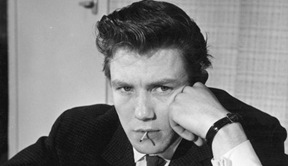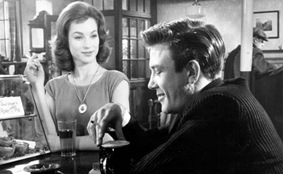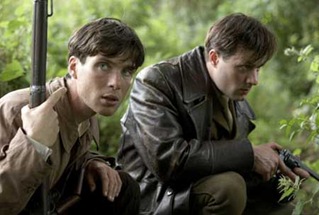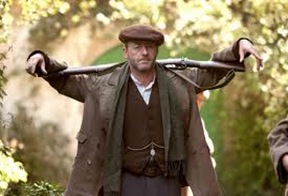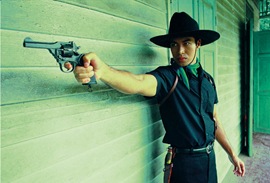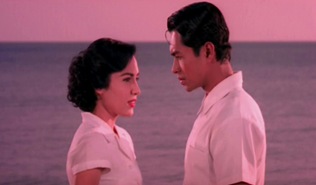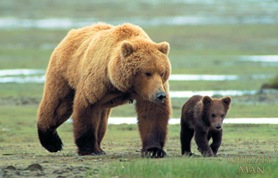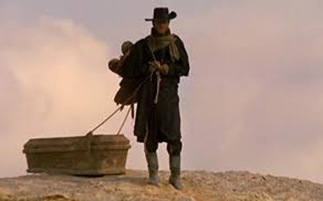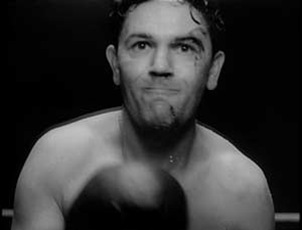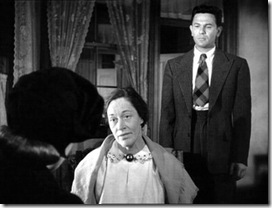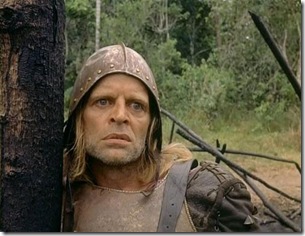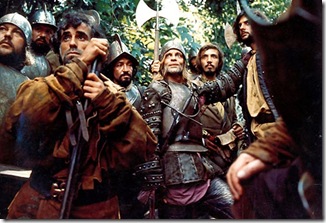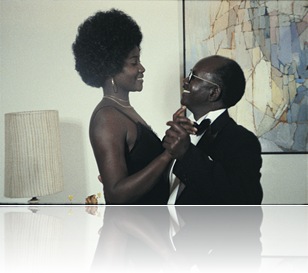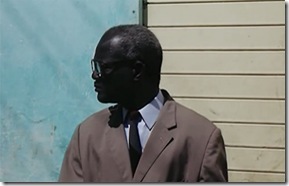2002
Director Michael Winterbottom
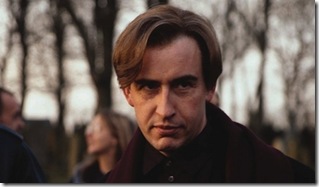 Throughout director Michael Winterbottom’s romp through the drug-addled Mancunian music scene of the 1970s and 80s, there are several moments of calm hilarity. These come in the form of Tony Wilson’s special Granada reports. It is not necessary to have lived in the North-West to ‘get’ the joke, as it’s a common feature of regional news broadcasters in this country that they pack their programs with some of the most mundane, meaningless tripe on television. Wilson goes hand gliding on the moors and, later, watches as a farmer shows him how he has taught a duck to herd sheep. It’s baffling and witty viewing, but it also shows exactly what Wilson is trying to escape from in his ventures into the music business: “I’m a serious fucking journalist ... I went to Cambridge.” These scenes are shot in the most naturalistic documentary style, with no breaking of the fourth wall from Steve Coogan, who plays Wilson, and, poignantly, little to no music. It is a stark contrast to the loud, electrifying scenes of The Factory and The Haçienda.
Throughout director Michael Winterbottom’s romp through the drug-addled Mancunian music scene of the 1970s and 80s, there are several moments of calm hilarity. These come in the form of Tony Wilson’s special Granada reports. It is not necessary to have lived in the North-West to ‘get’ the joke, as it’s a common feature of regional news broadcasters in this country that they pack their programs with some of the most mundane, meaningless tripe on television. Wilson goes hand gliding on the moors and, later, watches as a farmer shows him how he has taught a duck to herd sheep. It’s baffling and witty viewing, but it also shows exactly what Wilson is trying to escape from in his ventures into the music business: “I’m a serious fucking journalist ... I went to Cambridge.” These scenes are shot in the most naturalistic documentary style, with no breaking of the fourth wall from Steve Coogan, who plays Wilson, and, poignantly, little to no music. It is a stark contrast to the loud, electrifying scenes of The Factory and The Haçienda.
But this is where the heart of Winterbottom’s film lies. It charts the rise of journalist Tony Wilson, as he tries to revolutionise the Manchester music scene with bands such as Joy Division, New Order and the Happy Mondays. So much of 24 Hour Party People takes place in dingy bars, pubs and clubs, smoke pervading the screen, lights flashing from every orifice of the room, the camera getting in as close as possible to performers and spectators alike, that it is easy to become caught up in the intoxicating punk atmosphere. Despite the high level of drug use and death, it was hard not to leave the cinema feeling invigorated and jazzed, bopping away to the brilliant soundtrack and quickly getting onto iTunes to remind yourself just why Ian Curtis was, as Tony Wilson constantly put it, “a fucking genius.”
This is not a serious film. It’s an odd thing to say, considering it depicts the suicide of the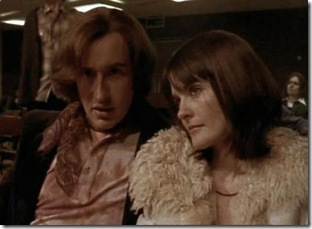 previously mentioned Curtis, as well as the demise of volatile, prickly producer Martin Hannett. Even without the drugs, there is sex, violence and (no, not rock ‘n’ roll, you squares!) language that would make Guy Ritchie choke on his beer-flavoured man crisps. But at no point does Winterbottom’s film ever feel like it is taking itself seriously. It is, as many synopses say, a ‘dramatization’ of real events, not a 100% accurate, factual account. This is a real credit to the director, who understands the medium of film and the power it holds, choosing to dazzle and entertain, rather than condescendingly ‘educate’ like other directors might have chosen to do. There are no anti-drug messages here.
previously mentioned Curtis, as well as the demise of volatile, prickly producer Martin Hannett. Even without the drugs, there is sex, violence and (no, not rock ‘n’ roll, you squares!) language that would make Guy Ritchie choke on his beer-flavoured man crisps. But at no point does Winterbottom’s film ever feel like it is taking itself seriously. It is, as many synopses say, a ‘dramatization’ of real events, not a 100% accurate, factual account. This is a real credit to the director, who understands the medium of film and the power it holds, choosing to dazzle and entertain, rather than condescendingly ‘educate’ like other directors might have chosen to do. There are no anti-drug messages here.
Winterbottom’s approach to the topic is bursting with originality. It is hard to even use the term ‘documentary’, as the use of cinema’s fourth wall is so eccentrically erratic that you barely know what you are watching. Frequently, Wilson addresses the camera, and the viewers, directly. He is quite literally the narrator of the piece, but not in the way we are used to in standard cinematic fodder, where the voice of an unseen yet omniscient narrator warbles on for the duration. He is leading us on this journey through “Madchester”, not just giving us snippets of his ‘wisdom’.
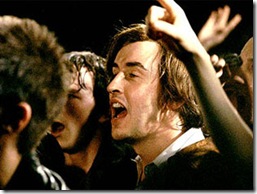 The audience is truly involved in this story. The documentary camera work and editing, of Robby Müller and Trevor Waite respectively, ensure that that the film maintains this factual feel. We are involved in real events. It is a truly unique cinema experience. Of all the ways Winterbottom could have presented this film, he has shown real imagination and innovation in viewer manipulation.
The audience is truly involved in this story. The documentary camera work and editing, of Robby Müller and Trevor Waite respectively, ensure that that the film maintains this factual feel. We are involved in real events. It is a truly unique cinema experience. Of all the ways Winterbottom could have presented this film, he has shown real imagination and innovation in viewer manipulation.
The cast is superb. None of them really resemble the individuals they are portraying, with Coogan achieving the most success with his awful hair and dodgy rolled-up sleeves as the Mancunian motor mouth Wilson. But it doesn’t matter. Similar facial features are not important. Most of the actors, aside from Coogan, are supporting players. They jump in and out of the narrative, each adding vibrancy and life to the screen. These are foul-mouthed, rude, drug-snorting, alcohol-slurping, chain-smoking, loud Mancunian folk. And boy, are they entertaining. It is an acquired taste, the same way as the machine-gun Bronx vocals of Martin Scorsese's gangster flicks or Yorkshire brogue in Ken Loache’s Kes. The accent and diction has the potential to alienate viewers.
There are standouts in the supporting cast, with Andy Serkis’ Martin Hannett adding real fizz to the screen whenever his obese, shaggy-haired producer waddles onto the screen insulting anyone with a pulse. Paddy Considine is also a treat as Rob Gretton, Joy Division’s manager. When we first meet him in the club, Considine plays Gretton as an intoxicated Cheshire cat; a grinning, bespectacled businessman, who descends into an angry, paranoid individual constantly at odds with Wilson. He is far more affected by Ian Curtis’ death than any of the actual members of Joy Division, many of them showing little to no concern during their lead singer’s many epileptic seizures. As Curtis, Sean Harris does not feature all that prominently, but he manages to do an effective job with what little screen time he is given. It helps that he has a slightly unstable look, which is just perfect for the tortured Curtis.
But the film belongs to Coogan. There is barely a scene without him, and he injects them with his awkward presence and comic excellence. It could be argued that he is essentially playing Wilson as the legendary Alan Partridge, but considering the success of his television and radio personality, it’s difficult to see Coogan as any other character. He is wonderful. An invigorating presence impossible to take your eyes off. Tony Wilson obviously saw a lot of himself in Norwich’s most famous radio DJ.
What an achievement 24 Hour Party People is. It is a work of startling originality and punch, for which Michael Winterbottom deserves a great deal of recognition.
**** ¼ / *****
 Raymond Martos and Charles McDevitt across the New England and Florida territories, as they try to meet their yearly quota.
Raymond Martos and Charles McDevitt across the New England and Florida territories, as they try to meet their yearly quota. 